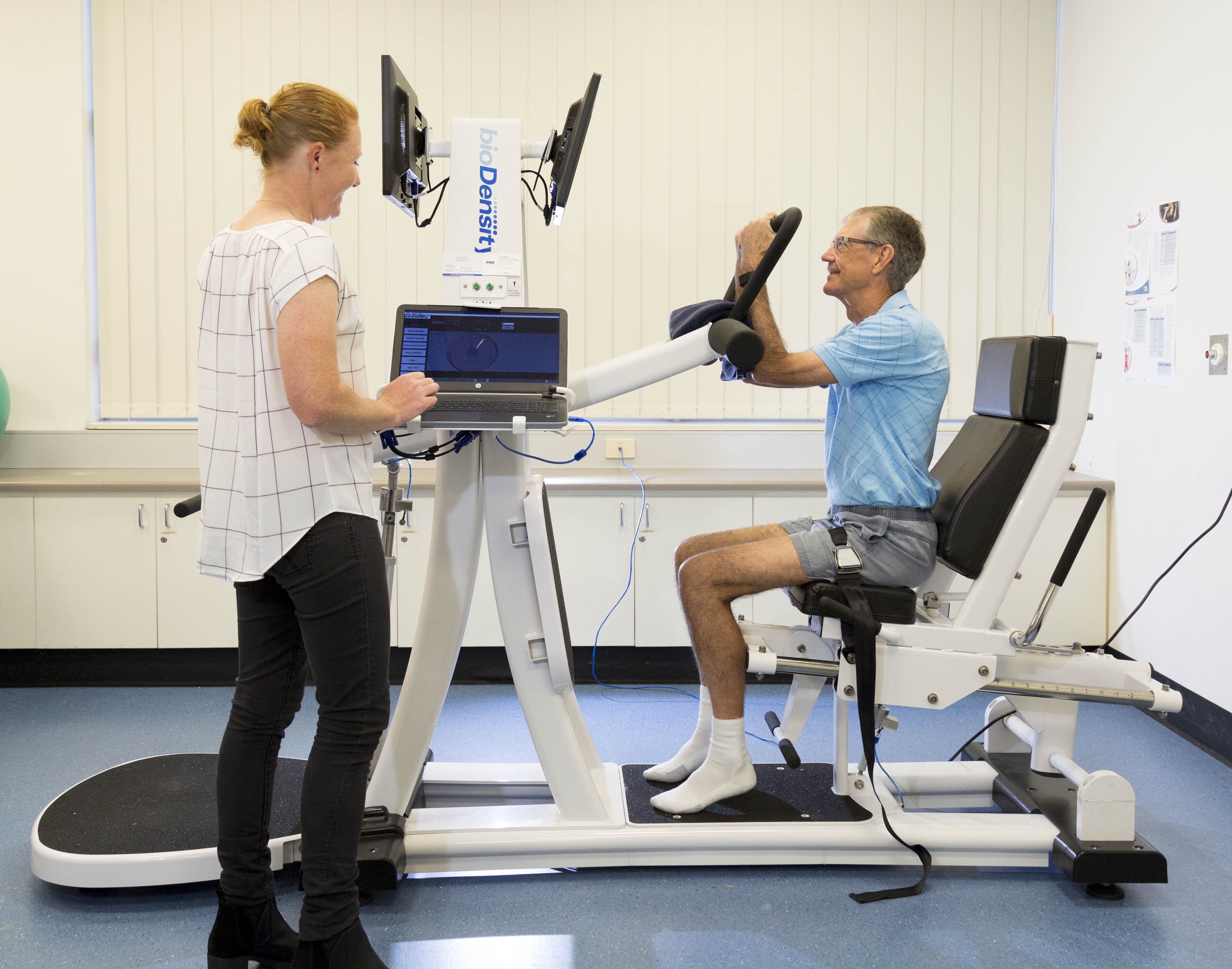A study targeting older men with low bone mass expects to see big improvements in bone and muscle strength without the need for drugs, say Griffith University researchers.
The Gold Coast study is examining whether high-load resistance training is a safe and effective strategy for improving bone and muscle strength in men over 50, aiding in the fight against osteoporosis.It follows a similar resistance training study in post-menopausal women.
Twenty-fiveper cent of people sustaining an osteoporotic hip fracture will die within a year and increased mortality risk persists for 10 years.
The study follows a story in the New York Times which claims that millions of Americans suffering from osteoporosis are riskingdebilitating fractures from weakened bones, because they’re terrified of exceedingly rare side effects from drugs that can help them.
“Although there are drugs available to improve bone strength, we have already shown with our women’s group that improvements can be made without the use of drugs by undertaking high-load resistance exercise training,” says lead researcher Professor Belinda Beck from Griffith’s Menzies Health Institute Queensland.
“We had some fantastic results with our women’s group who showed significant increases in bone strength as a result of the prescribed exercises and we are confident of replicating this now in our men.”
Lifting intervention
Called LIFTMOR-M (Lifting Intervention for Training Muscle and Osteoporosis Rehabilitation-for Men), the study is recruiting around 100 healthy men aged over 50 with low bone mass.
The men are being randomly assigned to either a high-load resistance training program or a high-load isometric training program on a novel device specifically designed to enhance bone health.
The LIFTMOR-M program takes 30 minutes twice a week for eight months, with participants undertaking a small number of exercises of gradually increasing intensity under full supervision.
All study participants receive free scans at the beginning and end of the study to assess changes in bone mass and muscle strength.
“People wrongly think that osteoporosis only affects women but the reality is that one in five men will also suffer an osteoporotic fracture over the age of 60. Unfortunately men are diagnosed much less frequently than women and are treated even more rarely,” says Professor Beck.
“The irony is that men suffer a greater loss of independence and are at higher risk of death following an osteoporotic fracture. Our goal is to provide the evidence for an effective therapy for men.”
Within 10years it is estimated that 6.2 million Australians over the age of 50 will suffer from osteoporosis or osteopenia and one fracture will occur every 2.9 minutes. The estimated cost of caring for those fractures will be $33.6 billion.
ï‚· For more information on the LIFTMOR for men study, please contact Amy Harding on 0410 616 596
Related articles:
